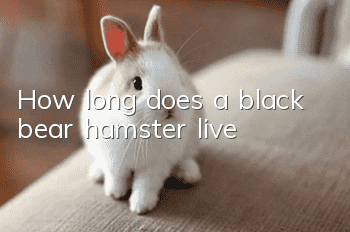Things to note when choosing chinchillas

1. Get to know the parents before choosing
Chinchillas are greatly affected by their parents’ genes. Good parental genes can give a young chinchilla a very good foundation. Therefore, before choosing a chinchilla, you must understand the situation of the parents.
The main thing to know is the color, size, weight, etc. of the parents (there is only one type of chinchilla, and the others are distinguished by coat color), as well as the age of the parents and the number of animals in the litter. The best childbearing age for chinchillas is in the middle years. Children born if they are too young or too old will be worse. There are usually 1-4 chinchillas in a litter. The smaller the number in the litter, the stronger the chinchillas will be. The larger the litter, the harder to say.
2. You are right to choose the big ones
In a litter of chinchillas, only one or two will usually get milk. Chinchillas start fighting for teats after they are born. Only the strongest ones can choke on the teats and drink the best and most abundant milk. If it is relatively weak, it will become weaker and weaker because it cannot get milk, and its health will not be so good. So when choosing chinchillas, it is right to choose the largest one in the litter.
3. Choose the liveliest one
After eating the milk, the little chinchillas began to jump around. Compared with adult chinchillas who meditate in a daze every day, young chinchillas are quite lively. Therefore, you should carefully observe when choosing. Choose the liveliest one, which means that this one has better body coordination.
4. Choose the one with the brightest coat that is not dirty
When the young chinchillas are born, their mother will help them take care of their hair. When they reach a certain age, the young chinchillas will start grooming themselves. If the chinchilla is dirty, it means it is lazy or is sick and does not have the energy to groom it. Bright coat color indicates health, while dull and knotted coat color indicates health problems.
5. Be sure to check that the front paws are intact
This is the most critical thing when choosing a chinchilla, and it is also a problem that you will not encounter when choosing other animals. Be sure to observe whether the digits on the chinchilla's front paws are intact, because it is common for chinchillas to lose one or even all of the digits on their front paws during a fight. Chinchillas use their front paws to grab food and bring it to their mouths to eat. If one of them is missing, the grip will be smaller. If there is no grip at all, they can only eat small scraps.
6. Check the tail of the chinchilla
The tail of the chinchilla is the weakest part, especially when the young chinchilla is just born, the tail is more fragile.
I often get stepped on when chinchillas are jumping. With the weight of a chinchilla, it will probably break if it steps down. It is difficult for a chinchilla to heal its tail fracture on its own, and the most troublesome thing is that it is difficult for veterinarians to repair it. The tail is used to maintain balance when the chinchilla jumps. A broken tail cannot be used well, resulting in poor jumping ability of the chinchilla.
7. The mouth, eyes, nose, ears and buttocks are clean
I won’t go into details about this. This applies to any pet you choose. That is to say, you must carefully look at the chinchilla's mouth, eyes, nose, and ears, and check whether the buttocks are clean. If you find that it is very dirty, with more nose excrement, eye wax, ear wax, unclean mouth, etc., a dirty butt means you have health problems.Health issues.
8. Observe the urine and poop
Observe the new urine and poop produced by the chinchilla to see if there are any problems with the color, shape, and taste. If it is normal, it is healthy; if it is abnormal, it means there is something wrong with your health.
- How do hamsters survive the winter?
- Why does a rabbit pull grapes?
- How much does a purebred Dutch lop rabbit cost?
- What does a rabbit cooing mean?
- Hamster died after feeding isatis root
- What do hamsters eat?
- What is the personality of a spotted hamster?
- What color is the fur of a hamster?
- How to take a bath with chinchillas
- Why does chinchilla always bite the cage?



